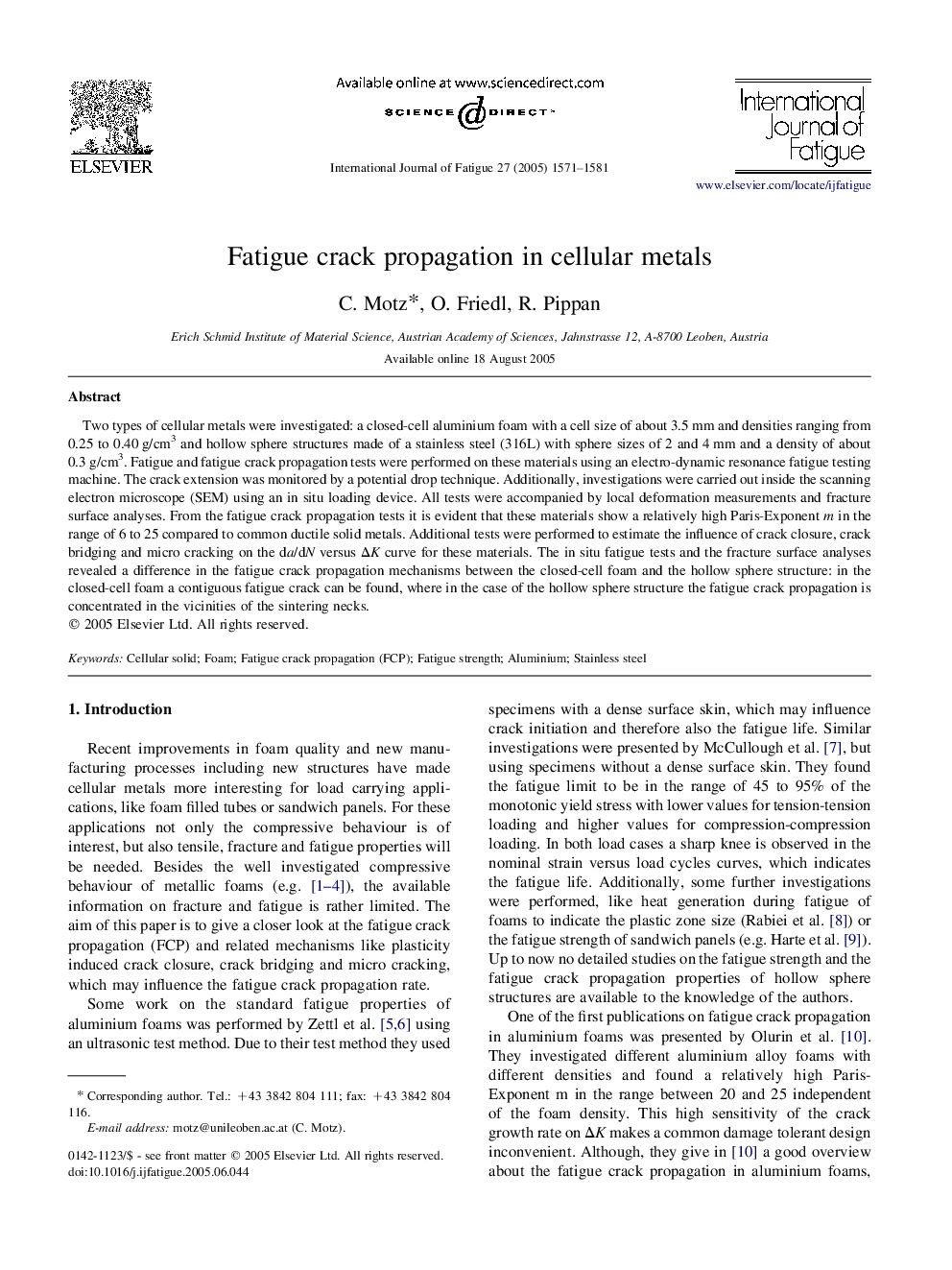| Article ID | Journal | Published Year | Pages | File Type |
|---|---|---|---|---|
| 9703899 | International Journal of Fatigue | 2005 | 11 Pages |
Abstract
Two types of cellular metals were investigated: a closed-cell aluminium foam with a cell size of about 3.5Â mm and densities ranging from 0.25 to 0.40Â g/cm3 and hollow sphere structures made of a stainless steel (316L) with sphere sizes of 2 and 4Â mm and a density of about 0.3Â g/cm3. Fatigue and fatigue crack propagation tests were performed on these materials using an electro-dynamic resonance fatigue testing machine. The crack extension was monitored by a potential drop technique. Additionally, investigations were carried out inside the scanning electron microscope (SEM) using an in situ loading device. All tests were accompanied by local deformation measurements and fracture surface analyses. From the fatigue crack propagation tests it is evident that these materials show a relatively high Paris-Exponent m in the range of 6 to 25 compared to common ductile solid metals. Additional tests were performed to estimate the influence of crack closure, crack bridging and micro cracking on the da/dN versus ÎK curve for these materials. The in situ fatigue tests and the fracture surface analyses revealed a difference in the fatigue crack propagation mechanisms between the closed-cell foam and the hollow sphere structure: in the closed-cell foam a contiguous fatigue crack can be found, where in the case of the hollow sphere structure the fatigue crack propagation is concentrated in the vicinities of the sintering necks.
Related Topics
Physical Sciences and Engineering
Engineering
Mechanical Engineering
Authors
C. Motz, O. Friedl, R. Pippan,
